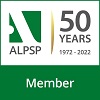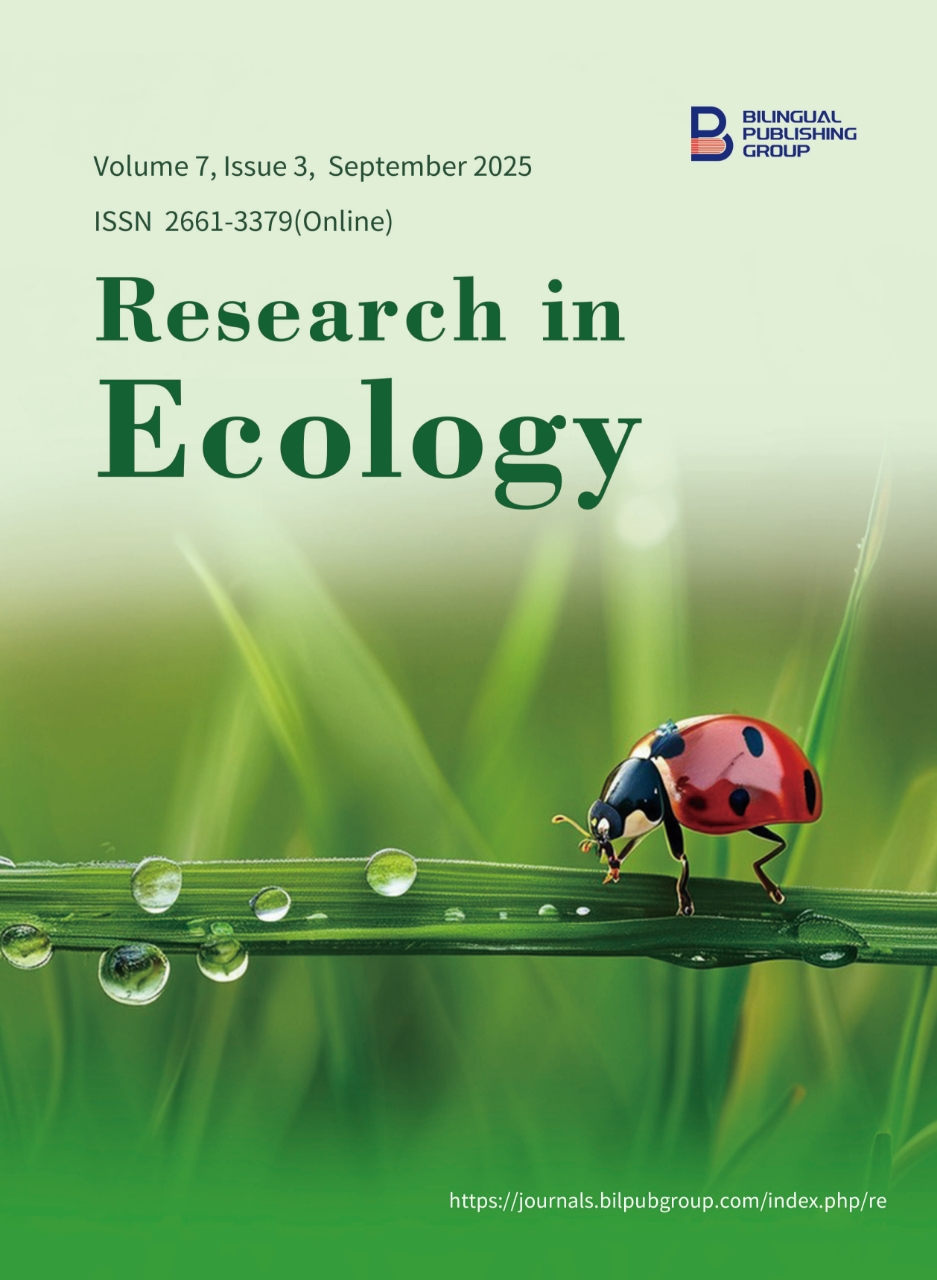
Sustainable Groundwater Management in Water-Scarce Regions: A Spatial Machine Learning Analysis from Rajshahi, Bangladesh
DOI:
https://doi.org/10.30564/re.v7i3.10453Abstract
Ensuring the availability and sustainable management of water (SDG 6) is particularly challenging in dry regions like Rajshahi, Bangladesh, where communities rely heavily on groundwater with limited recharge potential. Issues such as declining water levels and contamination by iron, arsenic, and chloride compromise both user satisfaction and public health. This study aimed to assess groundwater quality risks through regional mapping to guide the installation depth of new water sources. In collaboration with the Department of Public Health Engineering (DPHE), data were collected from 7,388 tube wells across nine upazilas, including well depth, geographic coordinates, and contaminant concentrations. Water quality was evaluated against World Health Organization and Bangladesh standards. Machine learning (XGBoost) and spatial analysis were applied to model contaminant levels based on location and well depth. An initial model showed poor performance, but after identifying and correcting key errors, the refined model yielded significant improvements: R² increased from 0.0345 to 0.62 for iron, from −0.0015 to 0.38 for arsenic, and from 0.12 to 0.71 for chloride. A comprehensive water quality risk map was developed by integrating these results at the upazila level. This map provides actionable insights for government agencies and NGOs to prioritize areas for water quality testing, remediation, and public awareness initiatives, contributing to more informed and sustainable water resource management in the region.
Keywords:
Arsenic Contamination; SDG 6; Iron Contamination; Health Risk; Groundwater AccessibilityReferences
[1] An, Z., Sun, C., Hao, S., 2025. Exploration of ecological compensation standard: Based on ecosystem service flow path. Applied Geography. 178(103588), 1–22. DOI: https://doi.org/10.1016/J.APGEOG.2025.103588
[2] Wimmer, F., Audsley, E., Malsy, M., 2015. Modelling the effects of cross-sectoral water allocation schemes in Europe. Climatic Change. 128(3–4), 229–244. DOI: https://doi.org/10.1007/S10584-014-1161-9/METRICS
[3] Wang, B., Tang, H., Xu, Y. 2017. Perceptions of human well-being across diverse respondents and landscapes in a mountain-basin system, China. Applied Geography. 85, 176–183. DOI: https://doi.org/10.1016/J.APGEOG.2017.05.006
[4] Roy, L.C., Ezaier, Y., Hader, A., et al. 2025. Fungi and Algae: A Synergistic Duo for Wastewater Treatment. International Journal of Environmental Science and Development. 16(1), 65–72. DOI: https://doi.org/10.18178/IJESD.2025.16.1.1511
[5] Roy, L.C., Saha, A., Rahman, M.R., 2023. Water quality and comparative pollution assessment of twelve major rivers in Bangladesh. In Proceedings of the 4th International Conference on Planning, Architecture and Civil Engineering, Rajshahi, Bangladesh, 12–14 October 2023; pp. 1034–1039.
[6] Arulbalaji, P., Padmalal, D., Sreelash, K., 2019. GIS and AHP Techniques Based Delineation of Groundwater Potential Zones: a case study from Southern Western Ghats, India. Scientific Reports. 9(1), 1–17. DOI: https://doi.org/10.1038/S41598-019-38567-X
[7] Jasechko, S., Seybold, H., Perrone, D., et al.2024. Rapid groundwater decline and some cases of recovery in aquifers globally. Nature. 625, 715–721. DOI: https://doi.org/10.1038/s41586-023-06879-8
[8] Jódar, J., Urrutia, J., Herrera, C., et al. 2024. The catastrophic effects of groundwater intensive exploitation and Megadrought on aquifers in Central Chile: Global change impact projections in water resources based on groundwater balance modeling. Science of The Total Environment. 914, 169651. DOI: https://doi.org/10.1016/J.SCITOTENV.2023.169651
[9] Rouillard, J., Babbitt, C., Pulido-Velazquez, M., et al. 2021. Transitioning out of Open Access: A Closer Look at Institutions for Management of Groundwater Rights in France, California, and Spain. Water Resources Research. 57(4). DOI: https://doi.org/10.1029/2020WR028951
[10] Wang, H., Shibata Okamura, K., Subandoro, A. W., et al. 2022. A Guiding Framework for Nutrition Public Expenditure Reviews. World Bank Group: Washington, D.C., USA. DOI: https://doi.org/10.1596/978-1-4648-1853-0
[11] Cobbina, S.J., Duwiejuah, A.B., Quansah, R., et al., 2015. Comparative Assessment of Heavy Metals in Drinking Water Sources in Two Small-Scale Mining Communities in Northern Ghana. International Journal of Environmental Research and Public Health 2015. 12(9), 10620–10634. DOI: https://doi.org/10.3390/IJERPH120910620
[12] Fonseca, T.R., das Neves, A.P.N., Castro, D.A., et al. 2020. Pre-oxidation with peracetic acid to degradation of chlorophyll-a from drinking water: A comparative study with calcium hypochlorite. Journal of Water Process Engineering. 38(101643). DOI: https://doi.org/10.1016/J.JWPE.2020.101643
[13] Katsanou, K., Karapanagioti, H.K., 2017. Surface Water and Groundwater Sources for Drinking Water. Handbook of Environmental Chemistry. 67, 1–19. DOI: https://doi.org/10.1007/698_2017_140
[14] Sorensen, J.P.R., Lapworth, D.J., Nkhuwa, D.C.W., et al. 2015. Emerging contaminants in urban groundwater sources in Africa. Water Research. 72, 51–63. DOI: https://doi.org/10.1016/J.WATRES.2014.08.002
[15] Ugwuadu, R.M., Nosike, E.I., Akakuru, O.U., et al. 2019. Comparative analysis of borehole water characteristics as a function of coordinates in Emohua and Ngor Okpala Local Government Areas, Southern Nigeria. World News of Natural Sciences. 24, 335–348.
[16] Boretti, A., Rosa, L., 2019. Reassessing the projections of the World Water Development Report. Npj Clean Water. 2(15), 1–6. DOI: https://doi.org/10.1038/s41545-019-0039-9
[17] Ercin, A.E., Hoekstra, A.Y., 2014. Water footprint scenarios for 2050: A global analysis. Environment International. 64, 71–82. DOI: https://doi.org/10.1016/J.ENVINT.2013.11.019
[18] Flörke, M., Schneider, C., McDonald, R.I., 2018. Water competition between cities and agriculture driven by climate change and urban growth. Nature Sustainability. 1, 51–58. DOI: https://doi.org/10.1038/s41893-017-0006-8
[19] Kummu, M., Guillaume, J.H.A., De Moel, H., et al. 2016. The world’s road to water scarcity: shortage and stress in the 20th century and pathways towards sustainability. Scientific Reports. 6, 38495. DOI: https://doi.org/10.1038/srep38495
[20] Lindqvist, A.N., Fornell, R., Prade, T., et al. 2021. Human-Water Dynamics and their Role for Seasonal Water Scarcity – a Case Study. Water Resources Management. 35(10), 3043–3061. DOI: https://doi.org/10.1007/S11269-021-02819-1
[21] United Nations, 2018. SDG 6 Synthesis Report 2018 on Water and Sanitation. United Nations iLibrary: New York, NY, USA. DOI: https://doi.org/10.18356/E8FC060B-EN
[22] Woodcock, R., Muhamedsalih, H., Martin, H., et al. 2014. Sustainability of global water use: past reconstruction and future projections. Environmental Research Letters. 9, 104003. DOI: https://doi.org/10.1088/1748-9326/9/10/104003
[23] Chakraborti, D., Rahman, M.M., Mukherjee, A., et al. 2015. Groundwater arsenic contamination in Bangladesh—21 Years of research. Journal of Trace Elements in Medicine and Biology. 31, 237–248. DOI: https://doi.org/10.1016/J.JTEMB.2015.01.003
[24] Chen, K.P., Jiao, J.J., 2007. Seawater intrusion and aquifer freshening near reclaimed coastal area of Shenzhen. Water Supply. 7(2), 137–145. DOI: https://doi.org/10.2166/WS.2007.048
[25] Pohl, J., Frick, V., Hoefner, A., et al. 2021. Environmental saving potentials of a smart home system from a life cycle perspective: How green is the smart home? Journal of Cleaner Production. 312, 127845.DOI: https://doi.org/10.1016/J.JCLEPRO.2021.127845
[26] Khan, N.I., Bruce, D., Naidu, R., et al., 2009. Implementation of food frequency questionnaire for the assessment of total dietary arsenic intake in Bangladesh: Part B, preliminary findings. Environmental Geochemistry and Health. 31(SUPPL. 1), 221–238. DOI: https://doi.org/10.1007/s10653-008-9232-3
[27] Podgorski, J., Araya, D., Berg, M., 2022. Geogenic manganese and iron in groundwater of Southeast Asia and Bangladesh – Machine learning spatial prediction modeling and comparison with arsenic. Science of The Total Environment. 833, 155131. DOI: https://doi.org/10.1016/J.SCITOTENV.2022.155131
[28] Boonkaewwan, S., Sonthiphand, P., Chotpantarat, S., 2021. Mechanisms of arsenic contamination associated with hydrochemical characteristics in coastal alluvial aquifers using multivariate statistical technique and hydrogeochemical modeling: a case study in Rayong province, eastern Thailand. Environmental Geochemistry and Health. 43, 537–566. DOI: https://doi.org/10.1007/s10653-020-00728-7
[29] Mahlknecht, J., Aguilar-Barajas, I., Farias, P., et al. 2023. Hydrochemical controls on arsenic contamination and its health risks in the Comarca Lagunera region (Mexico): Implications of the scientific evidence for public health policy. Science of The Total Environment. 857,159347. DOI: https://doi.org/10.1016/J.SCITOTENV.2022.159347
[30] Rahman, M.S., Reza, A.H.M.S., Sattar, G.S., et al. 2024. Mobilization mechanisms and spatial distribution of arsenic in groundwater of western Bangladesh: Evaluating water quality and health risk using EWQI and Monte Carlo simulation. Chemosphere. 366, 143453. DOI: https://doi.org/10.1016/J.CHEMOSPHERE.2024.143453
[31] Shaji, E., Santosh, M., Sarath, K.V., et al. 2021. Arsenic contamination of groundwater: A global synopsis with focus on the Indian Peninsula. Geoscience Frontiers. 12(3), 1–18. DOI: https://doi.org/10.1016/J.GSF.2020.08.015
[32] Urme, O., Reza, A.S., Adham, M.I., et al. 2025. Arsenic, manganese, and iron concentration in groundwater of northwestern part of Bangladesh using self-organizing maps: Implication for health risk assessment. Heliyon. 11(2), e41805. DOI: https://doi.org/10.1016/J.HELIYON.2025.E41805
[33] Rajapakse, J., Otoo, M., Danso, G., 2023. Progress in delivering SDG6: Safe water and sanitation. Cambridge Prisms: Water. 1, e6. DOI: https://doi.org/10.1017/WAT.2023.5
[34] Rahman, A.T.M.S., Kamruzzaman, M., Jahan, C.S., et al., 2016. Evaluation of spatio-temporal dynamics of water table in NW Bangladesh: an integrated approach of GIS and Statistics. Sustainable Water Resources Management. 2, 297–312. DOI: https://doi.org/10.1007/s40899-016-0057-4
[35] Banglapedia. 2023. Rajshahi District. Available from: https://en.banglapedia.org/index.php/Rajshahi_District (cited 14 April 2025).
Downloads
How to Cite
Issue
Article Type
License
Copyright © 2025 Sumaya Tabassum, Likhon Chandra Roy, Amit Kumar Sarkar, Yassine Ezaier, Hader Ahmed, Lghazi Youssef, Hesam Kamyab, Hussameldin Ibrahim, Mohammad Yusuf

This is an open access article under the Creative Commons Attribution-NonCommercial 4.0 International (CC BY-NC 4.0) License.




 Sumaya Tabassum
Sumaya Tabassum






